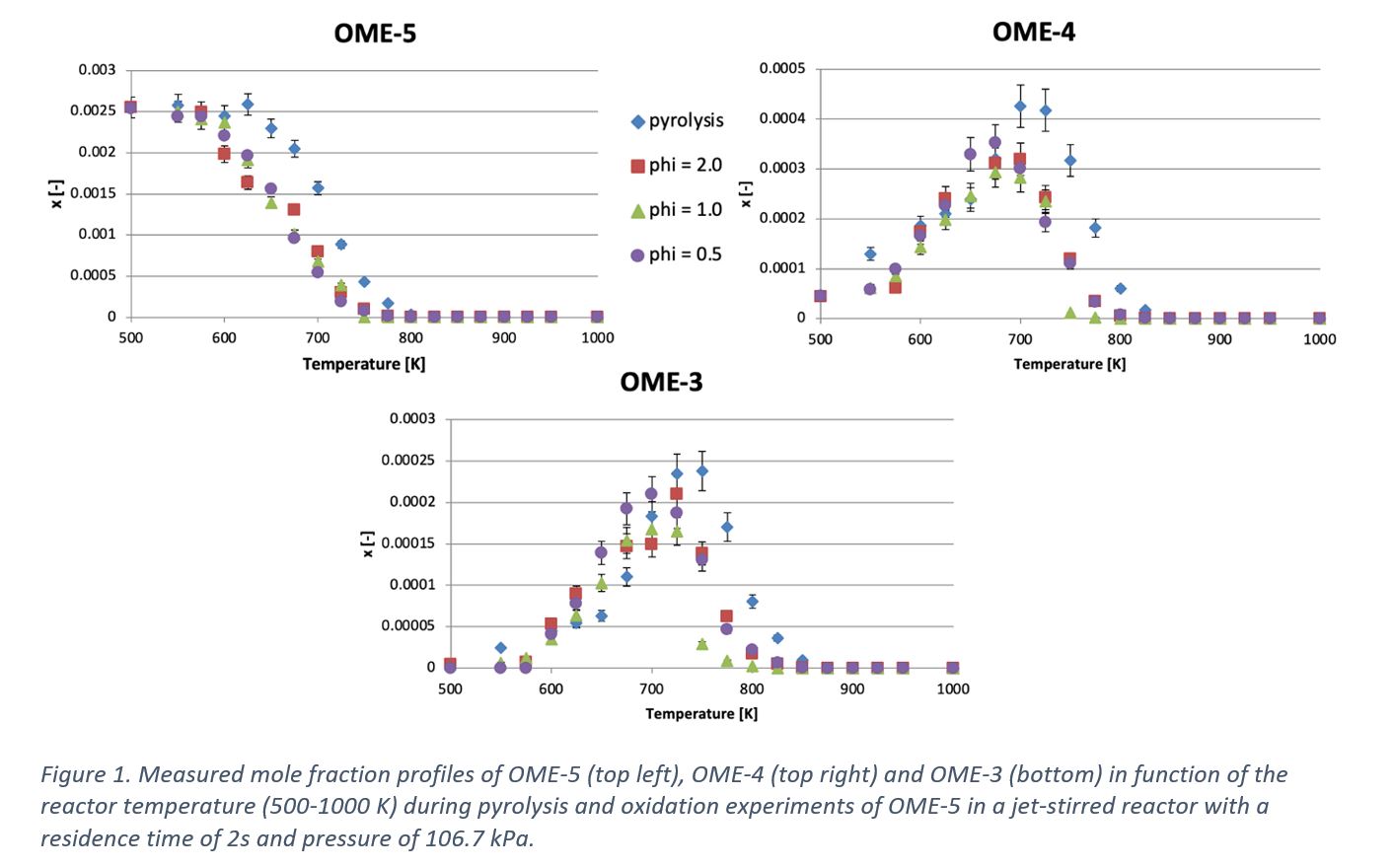2022 Annual Meeting
(620g) Unraveling the Radical Decomposition Chemistry of Longer-Chain Oxymethylene Ethers (OME-4 and OME-5): High-Potential e-Fuels
The present research focuses on combined modeling and experimental investigation of oxidation and pyrolysis of longer-chain oxymethylene ethers (OMEs). Several studies have already been performed on smaller âmodelâ OMEs, such as OME-1 and OME-2, from which fundamental insight is now extended towards OME-4 and OME-5. OMEs are a family of high-potential e-fuels with excellent combustion characteristics which can be produced in a carbon-neutral manner starting from captured CO2 and renewable energy. Moreover, blending OMEs with conventional diesel fuels reduces the particulate matter emissions because of the absence of carbon-carbon bonds. This results in less harmful emissions and contributes to a more sustainable transport sector. A first principles microkinetic model has been constructed systematically via the in-house developed automatic kinetic model generator âGenesysâ, to describe both the pyrolysis and oxidation chemistry. The availability of accurate thermochemical and kinetic data is a prerequisite to construct a kinetic model. Therefore, high-level quantum chemical calculations at the CBS-QB3 level of theory have been carried out for the most important reaction pathways for low- and high-temperature oxidation of OME-4 and OME-5. In addition, the results of quantum chemical calculations from smaller OMEs are extrapolated by regression of new group additive values and rate rules. Pyrolysis experiments have been performed with OME-4 and OME-5 in a tubular quartz reactor with a dedicated analysis section to detect and identify the whole product spectrum. The reaction conditions cover a broad temperature range (500-1150K) to investigate both the primary and secondary decomposition chemistry. Soot precursors, such as butadiene and acetylene, were not observed. In addition, pyrolysis and oxidation experiments have been performed in a jet-stirred reactor for a variety of equivalence ratios (Ï=0.25,0.5,1.0,2.0). Figure 1 depicts the molar yields of several OMEs during decomposition of OME-5 and indicates a significant formation of smaller OMEs during pyrolysis and oxidation.

